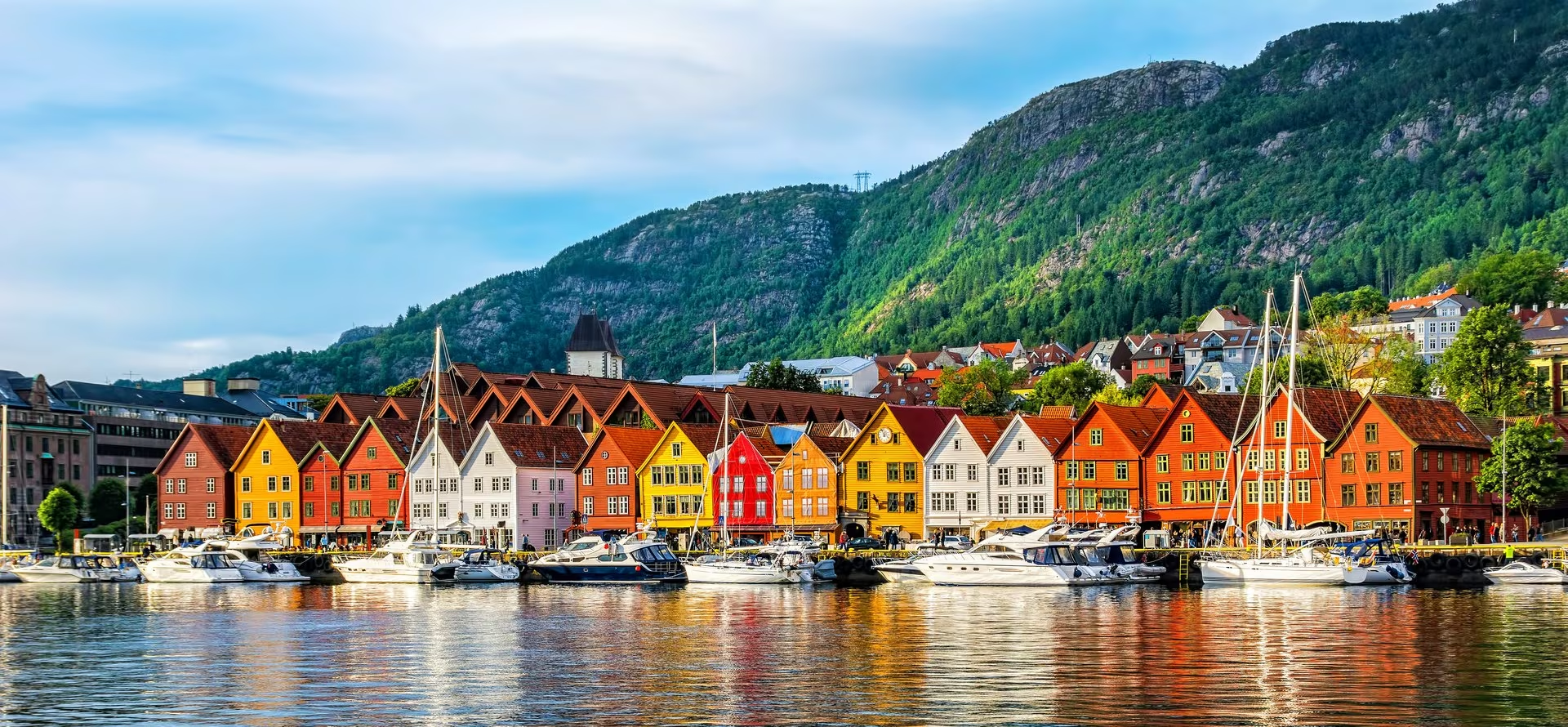Europe is a continent rich in history, culture, and stunning architecture, making it a perfect destination for travelers interested in exploring the past. Some of the most fascinating cities in Europe are port cities, where centuries of maritime trade, exploration, and cultural exchange have left a lasting mark. From the cobblestone streets of the Mediterranean to the northern fjords, Europe’s historic port cities offer a unique glimpse into the continent’s maritime heritage. Whether you’re drawn to ancient ruins, medieval fortresses, or elegant palaces, these cities provide endless opportunities to step back in time.
Here are some of the best historic port cities in Europe to visit, each with its own story to tell.
1. Barcelona, Spain
As one of the most famous cities in Europe, Barcelona blends its modern vibrancy with centuries of history. Situated along the Mediterranean Sea, Barcelona has been an important port for thousands of years, dating back to Roman times. The city’s maritime history is evident in its grand architecture, bustling markets, and stunning seafront.
The Barcelona Port is one of the busiest in Europe, but it’s also home to several historical landmarks. One of the most iconic sights is the Gothic Quarter, with its narrow streets and medieval buildings, including the impressive Barcelona Cathedral. You can also visit the Columbus Monument, which commemorates the famous explorer’s journey to the Americas in 1492.
Beyond its historical sites, Barcelona is known for its art and architecture, particularly the works of Antoni Gaudí, including the extraordinary Sagrada Família church and the whimsical Park Güell. Whether you’re strolling along La Rambla, exploring the Picasso Museum, or visiting the Maritime Museum, Barcelona offers an exciting mix of past and present.
2. Copenhagen, Denmark
Copenhagen, Denmark’s capital, is a charming city with a fascinating maritime history. Its port, Nyhavn, is one of the most picturesque places in the city, lined with colorful 17th-century houses and ships. Originally a busy commercial harbor, Nyhavn is now a popular spot for tourists, offering plenty of cafes, bars, and restaurants with views of the water.
Copenhagen’s history as a trading city is reflected in the many historic buildings around the city, including the Royal Danish Arsenal Museum, which once housed Denmark’s naval fleet. Another highlight is the National Museum of Denmark, where you can explore exhibits on Denmark’s history, including its maritime past. The city also boasts stunning palaces, such as Amalienborg Palace, home to the Danish royal family.
A visit to Copenhagen is not complete without seeing The Little Mermaid statue, one of Denmark’s most famous landmarks, inspired by Hans Christian Andersen’s fairy tale. Copenhagen is a city where history, culture, and modern design come together seamlessly, making it a must-see port city in Northern Europe.
3. Venice, Italy
Venice, with its winding canals and majestic palaces, is one of Europe’s most iconic port cities. Founded on a group of islands in the Adriatic Sea, Venice has long been a key player in European trade, particularly during the Middle Ages and the Renaissance. The city’s strategic location made it a center for commerce between the East and the West, and this rich history is reflected in its stunning architecture and art.
The Grand Canal, Venice’s main waterway, is lined with historic buildings, including the magnificent Palazzo Ducale (Doge’s Palace), which served as the seat of Venetian government for centuries. The city is also home to the Basilica di San Marco, a stunning example of Byzantine architecture with glittering mosaics and intricate designs. Visitors can also take a gondola ride through the city’s canals for a truly romantic and historic experience.
Venice’s maritime history is showcased at the Naval History Museum, where you can explore the city’s naval achievements over the centuries. Whether you’re wandering the narrow streets, visiting the Rialto Bridge, or exploring the islands of Murano and Burano, Venice offers an unforgettable journey through time.
4. Porto, Portugal
Located along the Douro River in northern Portugal, Porto is a city known for its historic port wine production and rich maritime history. The city’s historic center is a UNESCO World Heritage site, with narrow streets, colorful buildings, and grand monuments that date back to the Roman Empire.
Porto’s historic port district, known as the Ribeira, is one of the most picturesque areas of the city. Here, you can explore the bustling waterfront, visit the iconic Dom Luís I Bridge, and take a boat tour along the Douro River. The city’s long history as a center of trade is reflected in its impressive architecture, including the São Bento Railway Station, known for its beautiful azulejos (decorative ceramic tiles) that depict scenes of Portugal’s history.
No visit to Porto is complete without sampling its famous port wine. Many wine cellars, located on the southern banks of the Douro River, offer tours and tastings where you can learn about the production process and sample the different varieties of port.
5. Dubrovnik, Croatia
Known as the “Pearl of the Adriatic,” Dubrovnik is one of the most well-preserved medieval port cities in Europe. Located on Croatia’s Dalmatian Coast, Dubrovnik has a rich maritime history that dates back to the 7th century. The city became a powerful maritime republic and trading center, known for its skilled sailors and merchant fleet.
Dubrovnik’s Old Town is a UNESCO World Heritage site, with its stunning city walls, which are among the most impressive in Europe. Walking along the walls provides a unique perspective of the city’s architecture and the surrounding sea. The historic Old Port is a great place to start your exploration, with its cobblestone streets, cafes, and the beautiful Church of St. Blaise.
The city is also famous for its Rector’s Palace, which served as the seat of the government of the Republic of Ragusa, as well as its vibrant cultural scene. Dubrovnik is a perfect blend of history, architecture, and natural beauty, making it a must-visit for history lovers and couples alike.
6. Marseille, France
Marseille, France’s second-largest city, has been a vital port for over 2,600 years. Situated on the Mediterranean coast, Marseille’s port has been a hub for trade, exploration, and immigration, making it one of the most culturally diverse cities in France. The city is a melting pot of cultures, with influences from North Africa, the Middle East, and beyond.
The Old Port of Marseille, or Vieux-Port, is the heart of the city and a great starting point for exploring. The iconic Basilique Notre-Dame de la Garde offers panoramic views of the city and the Mediterranean Sea, while the historic Fort Saint-Nicolas and Fort Saint-Jean stand as symbols of the city’s past as a fortified port.
Marseille’s maritime heritage is also evident at the Musée des Civilisations de l’Europe et de la Méditerranée (MuCEM), which explores the history of the Mediterranean through art, history, and archaeology. The city is also known for its vibrant markets, such as the Noailles Market, where you can sample local goods and food from around the world.
7. Stockholm, Sweden
Stockholm, Sweden’s capital, is spread across 14 islands connected by bridges and is known for its stunning waterfront views and historical significance. The city’s port has been a hub for trade and culture since its founding in the 13th century, and it continues to be a vital part of the city’s identity.
The Gamla Stan (Old Town) is the historic heart of Stockholm, with cobbled streets, colorful buildings, and landmarks like the Royal Palace and Stockholm Cathedral. The Vasa Museum, which houses a 17th-century warship, offers a fascinating look at Sweden’s naval history. The Skansen open-air museum and zoo provides a glimpse into Sweden’s past, with historic buildings and cultural exhibits that highlight the country’s maritime heritage.
Stockholm’s waterfront location makes it a great base for exploring the surrounding archipelago, with thousands of islands to discover. Whether you’re exploring the city’s historic sites or taking a boat tour through the archipelago, Stockholm’s rich history and stunning scenery offer a memorable experience.
8. European Cruises
For those looking to explore multiple historic port cities in Europe, taking a European cruise is a fantastic way to see several destinations in one trip. Many cruise lines offer itineraries that visit a variety of coastal cities, including Barcelona, Venice, Dubrovnik, and Marseille, providing a comprehensive view of Europe’s maritime heritage.
Cruising allows you to unpack once and visit different cities, each with its own unique history and culture. You’ll have the opportunity to explore ancient ports, dine on local cuisine, and enjoy the stunning beauty of Europe’s coastlines—all while enjoying the comfort and luxury of a cruise ship.
Conclusion
Europe’s historic port cities offer a captivating journey through time, where you can explore centuries-old architecture, experience vibrant cultures, and discover the stories behind some of the world’s most important maritime hubs. Whether you’re visiting Barcelona’s Gothic Quarter, wandering the streets of Dubrovnik, or cruising through the Mediterranean, these cities provide a unique opportunity to experience Europe’s fascinating history and stunning landscapes. Whether you’re interested in history, architecture, or simply enjoying the sea, these historic port cities are sure to leave a lasting impression.










